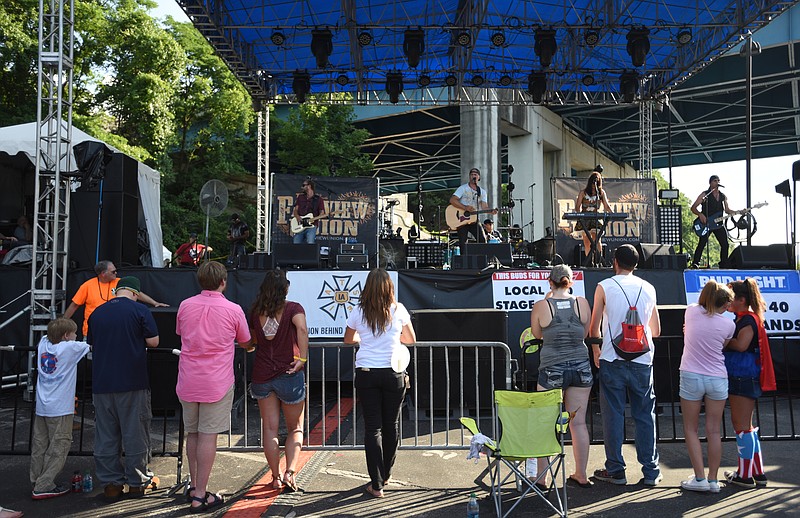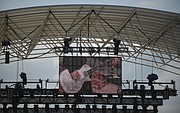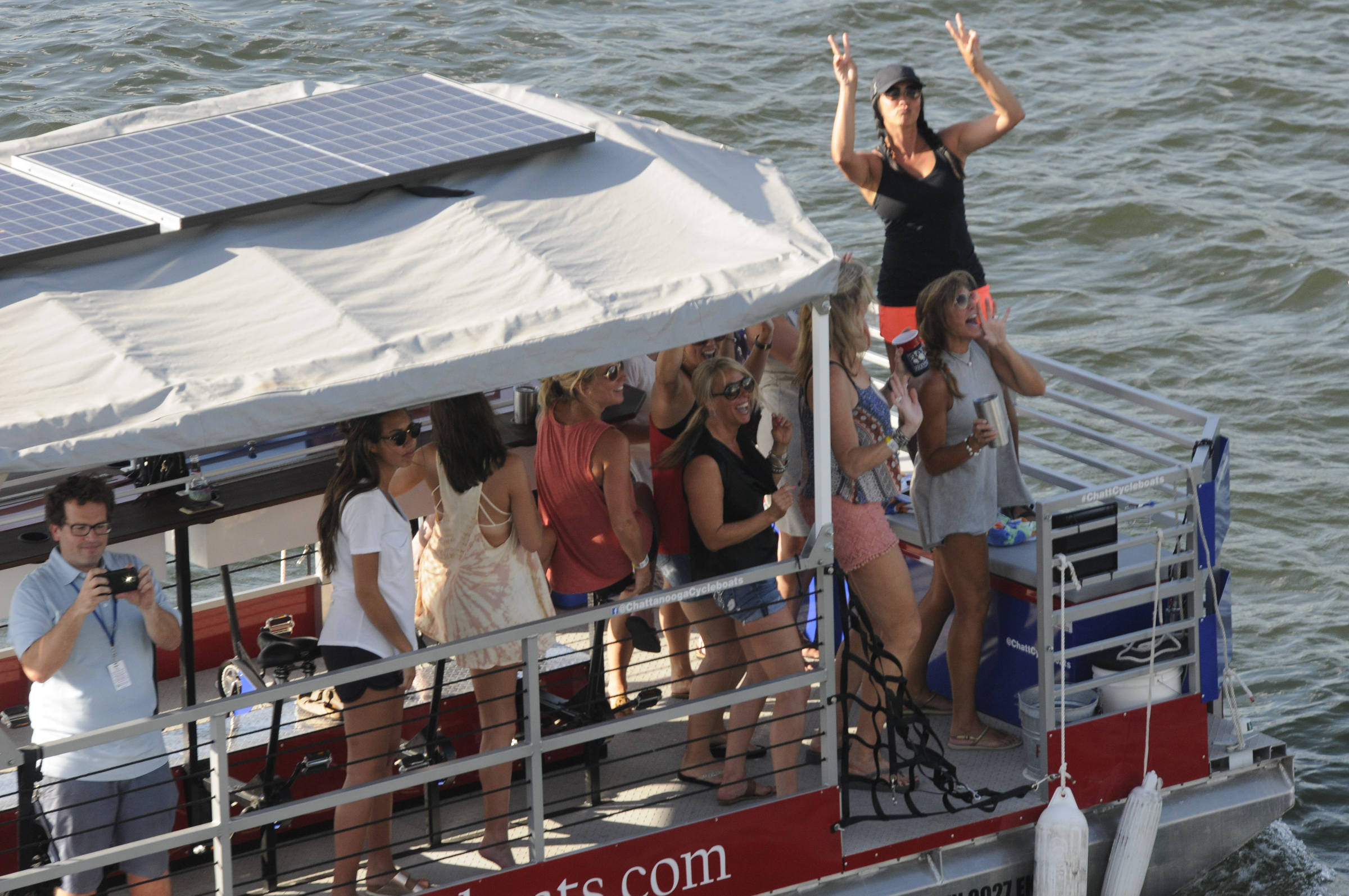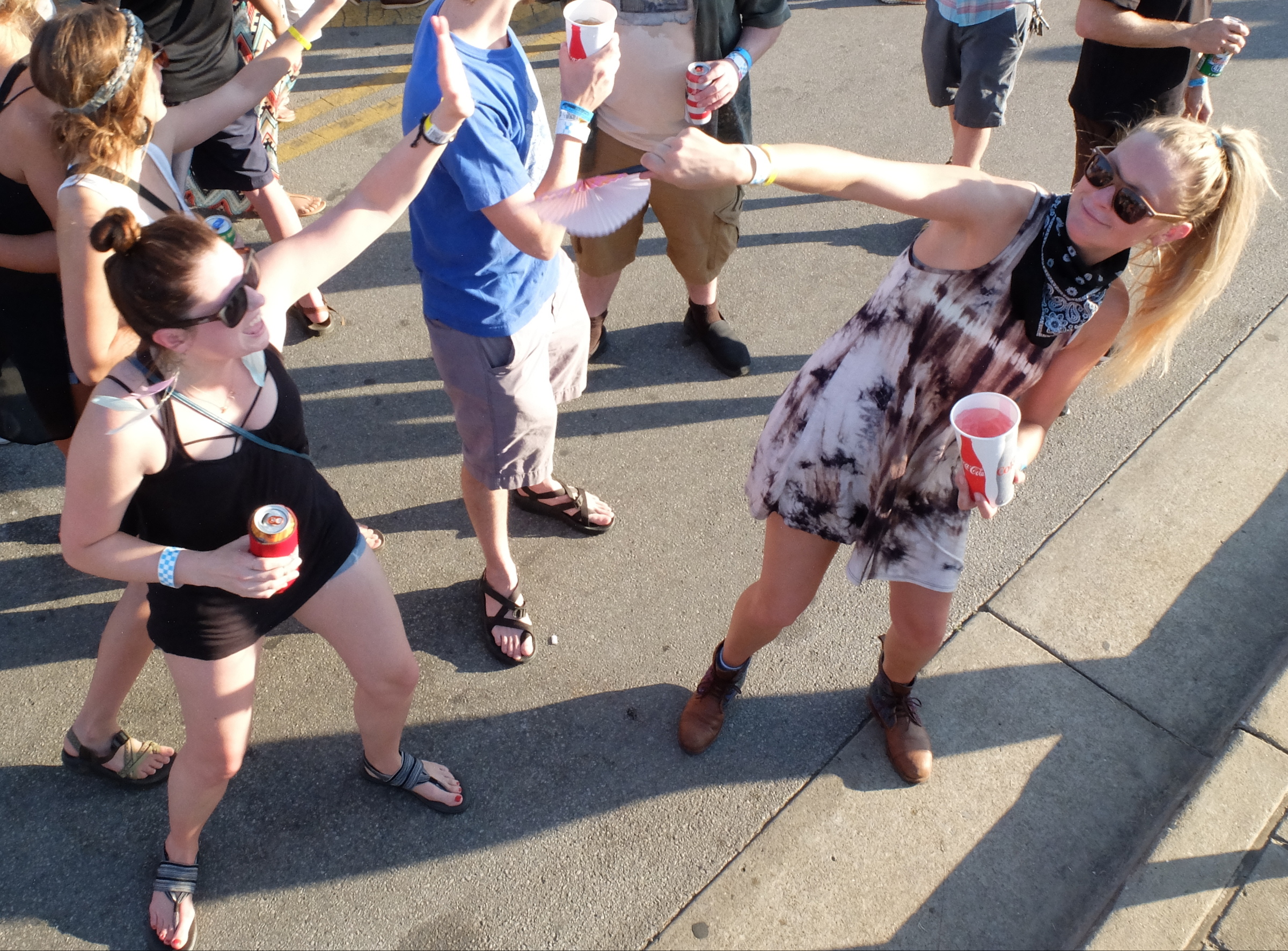Photo Gallery
Riverbend ripples: Tweaking elements of the festival often has unexpected consequences
When viewed in the short term, Riverbend can seem like a mostly static entity, one that's slow to change and largely content to remain within the mold that has allowed it to endure for 35 years.
But like a glacier in perpetual foot-by-foot advance, the festival has undergone many changes throughout its existence.
Sometimes the changes are small, such as relocating a food truck to a more highly trafficked area. Other shifts are game-changing, such as the switch in 2014 to using scannable wristbands for admittance after decades of selling collectible plastic pins.
"You have to constantly tweak the system, based on what people want to hear, based on your physical site limitations and on keeping it fresh," says Friends of the Festival Executive Director Chip Baker. "Sometimes people see the changes and sometimes they don't, but it's never the same year after year."
With an event of Riverbend's size and with as many moving parts, however, changing anything can result in a ripple effect of unanticipated consequences.
The way Riverbend organizers describe running the event, moving to adjust any element of its execution, however small, has to be approached carefully and with the forward-thinking consideration of a chess grandmaster, one who also understands the variables of costs vs. return.
"You have to consider all the possibilities. You have to think, 'OK, this is what can go right. This is what can go wrong,'" says Talent and Production Coordinator Joe "Dixie" Fuller. "It's like legal gambling. You have to consider what the payoff could be and be ready to take your losses."
Actions, reactions
In 2015, Riverbend underwent one of its biggest adjustments in recent memory. After years of hosting a single artist on the Coca-Cola Stage each night, Friends of the Festival spent more than $300,000 to add daily "co-headliners" to the barge.
Friends of the Festival Talent Assistant Bob Payne says doubling the number of Coke Stage artists has increased single-evening wristband sales "a lot," especially for bands with fanbases that are willing to travel, such as prog rock/jam band Umphrey's McGee, which played Thursday on the stage.
In its first year, however, the logistical cost of producing the early show proved higher than anticipated, says Fuller.
"By adding that early show your sound guys and lighting guys have to stay on longer," he says. "You have to really be prepared for those costs, those overruns, to be rather substantial.
"Then you go back and tweak your budget and go, 'Wow, it's going to take more money to do that than we thought.' It's not going to kill us, but we learned a very valuable lesson."
Forced hands
Sometimes a change results in more complications than the problem it was intended to solve.
In 2008, in an effort to ease traffic congestion along Riverfront Parkway and crowd spillover from the Coke Stage, the Bud Light Stage was relocated to the south side of the parking lot that serves as the festival's primary concession area. In the stage's former orientation, it forced acts such as the Ohio Players and Joe Bonamassa to look directly into the sun.
"Bad idea, bad me, my bad," Fuller says. "We also had some ballet dancers on the stage and they wear those thin ballet slippers and the stage was baking red-hot. It was a train wreck. That's one of those things where you go, 'Oh darn. Didn't think about that.'"
The next year, the stage was moved to the opposite end of the parking lot under the Olgiati Bridge and turned to face away from the sun.
Some changes are made out of necessity. In 2004, the festival took place in the midst of the $120 million project to create the 21st Century Waterfront. According to Times Free Press reports from that year, there was construction debris on site and some attendees were confused by stage relocations.
This year, the festival had to adjust to a similar boom in downtown development. Thanks to ongoing construction of The Edwin, a 90-room boutique hotel on Walnut Street, the Unum Stage was forced to move forward by 40 feet - "a huge jump," Fuller says - limiting the room available for listeners to stand or sit.
Already, Baker says, Mitch Patel, the president and CEO of Vision Hospitality Group, which is building The Edwin, has approached the festival about incorporating its planned rooftop bar into Riverbend when the hotel opens next year.
"It's about having a good dialog with the developers and businesses," Baker says. "It's always great, from my perspective, when a business owner says, 'Hey, let's do something together.' Then, that makes it that much more fun because you're working together, and that's the best way to be."
Next year, the ongoing rebuild of U.S. 27 will result in a closure of the Olgiati Bridge and a potential "rearrangement" of the Bud Light Stage, which sits within an area that will be inaccessible because of the construction, Baker says.
Rather than see these developments as headaches, however, Baker describes the process of finding ways to co-exist with downtown growth as "what makes [organizing the festival] fun."
He cites the pier at Ross's Landing, which was created during the 21st Century Waterfront build. At first, he says, Friends of the Festival organizers were unsure how to incorporate the pier into event, but they eventually settled on transforming it into Club Riverbend, a special VIP area inspired by a similar program at SunFest, a festival in Palm Beach, Fla.
Building a game plan
When organizers' hands aren't being forced, many of the alterations to Riverbend originate during an all-day roundtable discussion that Friends of the Festival hosts in late July or early August. During the discussion, Friends of the Festival staff compare notes on what worked and what didn't during that year's Riverbend and also consider feedback from board members and the community, Baker says.
"We take all those into account and try to reshape the game plan for the next year," he says.
Some of the changes this year were in response to lessons learned from past festivals.
On the Bud Light Stage, crowds now stand behind a newly installed metal-fence-and-concrete barrier a few feet in front of the stage, a change implemented after unexpectedly high turnout to shows by Florida Georgia Line in 2013 and Sam Hunt in 2015. And with the last-minute addition of local-country-singer-turned-national-sensation Kane Brown to the Bud Light Stage lineup this year, Fuller says he decided the barrier was warranted.
"The crowd was absolutely huge," Fuller says of Brown's performance on Sunday. "Last year for Sam Hunt, that's when I realized we really needed to consider the barricade option because people were getting mashed beneath the stage. No one was hurt, but in that massive a crowd, no one in the back realizes what's happening with people up front.
"Florida Georgia Line got my attention; Sam Hunt settled it for me."
This year, organizers also enacted a pair of changes designed to improve the Coke Stage viewing experience for those who want to see the early headlining acts.
Attendees now can specifically purchase premium Star Seats in the grass-and-concrete terrace in front of the barge instead of buying a single Star Seat ticket for the entire evening. A ticket for the early show is $10 - along with the regular cost of getting into Riverbend - while Star Seats for the headliner are $30. Fuller says a new LED video screen suspended above the stage was installed in the hopes of making it easier to see the early headliners, who perform at a time when sunlight would have overpowered the projection system the festival used to employ.
"Adding the video wall to the Coke Stage is probably one of the best things we've done," Fuller says. "You're taking and adding a little more weight to the roof, but [you're] giving everyone out there a much better TV to look at, and you can see it during the day. Your eyes can't handle how bright those things can get."
The changes to the festival may not come quickly enough for some, but no event of Riverbend's size can survive so long by radically changing itself or by remaining too stuck in its ways, organizers say. Change must come consistently and after careful consideration of the impact, Payne says.
"Everyone is really careful in making sure we don't overstep our bounds but, at the same time, you have to try new stuff or else you go stagnant," he says. "We're just trying to streamline it.
"The festival folks [don't] look at it like, 'What can we do to make it better for us?' but 'How can we make it better for the festival-goers?' That's what pays the bills."
Contact Casey Phillips at cphillips@timesfreepress.com or 423-757-6205. Follow him on Twitter at @PhillipsCTFP.




